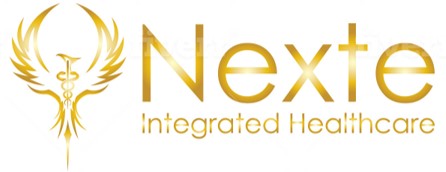What is acupuncture and how does it help?
“It took almost 300 years for Europe and 400 years for the United States to finally appreciate the therapeutic value of acupuncture. Findings from basic medical research that acupuncture stimulation causes the release of endorphins, serotonin, enkephalins, and γ-amino-butyric acid (GABA; a major inhibitory neurotransmitter of the brain), norepinephrine, and dopamine helped to explain the acupuncture effect on a biomedical and pharmacological basis that was acceptable to the Western medical establishment.”(1)
 Acupuncture has thousands of years of history, and it is now a very modern mainstream evidence-based medicine in many countries such as China, Australia, Europe, and Canada. According to statistics by Acupuncture & Massage College in 2017, nearly 14 million citizens in the United States have used acupuncture to treat pain and diseases(2). In the past 20 years, the exponential growth rate of research on acupuncture as a medical treatment has doubled that of traditional biomedical research. During this period, more than 13,000 studies on acupuncture have been conducted in 60 countries/regions (3).
Acupuncture has thousands of years of history, and it is now a very modern mainstream evidence-based medicine in many countries such as China, Australia, Europe, and Canada. According to statistics by Acupuncture & Massage College in 2017, nearly 14 million citizens in the United States have used acupuncture to treat pain and diseases(2). In the past 20 years, the exponential growth rate of research on acupuncture as a medical treatment has doubled that of traditional biomedical research. During this period, more than 13,000 studies on acupuncture have been conducted in 60 countries/regions (3).
Acupuncture uses a very thin needle about 1/40 the size of a general injection needle to precisely pierce specific acupoints to stimulate the nervous system and connective tissue and release about 20 kinds of chemicals from acupoints into the muscles, spinal cord, and the brain. These biochemical changes stimulate the body’s natural healing ability and promote physical and mental health through the metabolic components, such as oxygen, hormones, neurotransmitters, and nutrients carried by the blood, nerves, and the function of the organ system.
 Acupuncture has been shown to stimulate nerves and connective tissue, which can have a profound effect on the nervous system, including regulating key areas of the brain. This improved function allows the body to produce its own natural chemicals, thereby reducing pain, reducing inflammation, and releasing neurotransmitters, and creating a sense of relaxation. Advanced technologies such as functional magnetic resonance imaging, brain imaging, and proteomics have deepened the understanding of how acupuncture helps the body to heal itself.
Acupuncture has been shown to stimulate nerves and connective tissue, which can have a profound effect on the nervous system, including regulating key areas of the brain. This improved function allows the body to produce its own natural chemicals, thereby reducing pain, reducing inflammation, and releasing neurotransmitters, and creating a sense of relaxation. Advanced technologies such as functional magnetic resonance imaging, brain imaging, and proteomics have deepened the understanding of how acupuncture helps the body to heal itself.
 Research by the National Institutes of Health (NIH) shows that acupuncture can treat many diseases, such as various acute and chronic pain. Allergic rhinitis (including hay fever), depression (including depressive neurosis and post-stroke depression), dysmenorrhea, infertility, nausea and vomiting, stroke, alcohol dependence and detoxification, Bell’s Paralysis, disaster or stress syndrome, insomnia, obesity, premenstrual syndrome, polycystic ovary syndrome (Stein-Leventhal syndrome), and many chronic diseases of the elderly, are the scope of acupuncture treatment, which can also help stroke recovery. Therefore, modern acupuncture has been widely used in various medical fields or applied in combination with different medical systems. Physiotherapists and chiropractors are now using acupuncture to treat musculoskeletal pain, medical doctors to treat migraines and nausea, midwives to help childbirth and infertility. Combining traditional Chinese and Western medicine has become the norm, the US military has used acupuncture to assist veterans’ physical and mental needs, and use acupuncture to help treat drug and alcohol addiction.
Research by the National Institutes of Health (NIH) shows that acupuncture can treat many diseases, such as various acute and chronic pain. Allergic rhinitis (including hay fever), depression (including depressive neurosis and post-stroke depression), dysmenorrhea, infertility, nausea and vomiting, stroke, alcohol dependence and detoxification, Bell’s Paralysis, disaster or stress syndrome, insomnia, obesity, premenstrual syndrome, polycystic ovary syndrome (Stein-Leventhal syndrome), and many chronic diseases of the elderly, are the scope of acupuncture treatment, which can also help stroke recovery. Therefore, modern acupuncture has been widely used in various medical fields or applied in combination with different medical systems. Physiotherapists and chiropractors are now using acupuncture to treat musculoskeletal pain, medical doctors to treat migraines and nausea, midwives to help childbirth and infertility. Combining traditional Chinese and Western medicine has become the norm, the US military has used acupuncture to assist veterans’ physical and mental needs, and use acupuncture to help treat drug and alcohol addiction.
Acupuncture is currently accepted and covered by some medical insurance companies.
Ref:
1. Dominic P. Lu, DDS, LicAcucorresponding author, and Gabriel P. Lu, MD, MA, PhD. A Historical Review and Perspective on the Impact of Acupuncture on U.S. Medicine and Society. Med Acupunct. 2013 Oct; 25(5): 311–316.
2. Acupuncture & Massage College. Increasing Demand for Acupuncture in America. July 14, 2017. https://www.amcollege.edu/blog/increasing-demand-of-acupuncture-in-the-u-s


